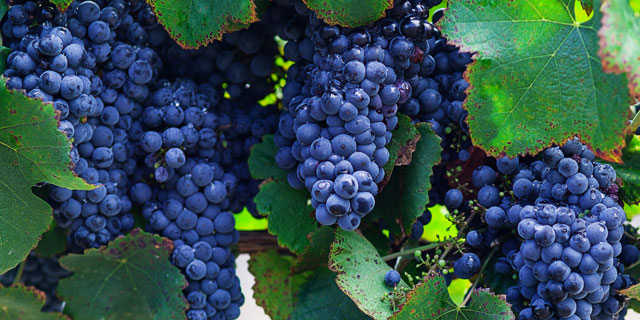A glance at a bunch of Tannat tells you a lot about it: they are small, dark grapes, crowding close, defying those who would dare take its juice. In Madiran, France, its traditional home, the grapes got the respect they demanded. Left hanging for as long as possible to temper their insolent, tannic edge, once bottled, Tannat can be left for years, almost apologetically. They say that the French Tannat of old had a shelf life equal to many humans. While modern techniques have changed this, it is in Uruguay where they have truly mastered this unruly grape.
Uruguayan Tannat
Tucked in below behemoth neighbors Brazil and Argentina, Uruguay, the tiny country on the De la Plata River, has quietly been working towards a world class wine industry. In the 90s, modernized vineyards and winemaking techniques came of age, and with the support of international consultants from California, Australia, and New Zealand, they started exporting wines good enough to catch the eye of top critics and sommeliers.
Tannat arrived centuries ago in this temperate, maritime-influenced winemaking country, but it is only recently, as winemakers started drastically reducing yields, that quality started showing. Hot summers combined with a cooling effect from the nearby ocean allow the short growth cycle Tannat to mature beyond what was possible in France, softeniing the famously punchy tannins, yet maintaining a lively acidity.
Expert Opinion
Eduardo Boido, winemaker at the boutique winery Bouza near Montevideo and creator of some of the country’s best known wines, agrees that the proximity to the sea and the resulting acidity are the greatest assets that Uruguay has to offer. This allows him to make great food wines out of his Tannat, something that should definitely be tried and tested at the excellent restaurant at the winery.
At the same time, the climate is also the greatest challenge as it varies markedly each year, particularly in terms of harvest time rains and high humidity. The upside of this, adds Boido, is that that each vintage is noticeably different in the glass, a pleasure for wine lovers to sit, taste, and chat about for hours on end. Over a mammoth Uruguayan asado, of course.
“A Tannat is ideal for barbecued meats, you don’t lose the wine between the aromas of the smoke and the strong flavors of the coals,” agrees Francisco Carrau, widely respected as a forerunner in modernizing Uruguay’s wine industry at one of the oldest family owned wineries, Bodegas Carrau, and professor of enology at the University of the Republic. “Still, only after about 10 years in the bottle will you be able to really enjoy it as a drinking wine with cheese and nuts.”
They may have tamed it but they still respect this tough French grape that now proudly wears a Uruguayan gaucho hat. Pick up a glass of inky red Tannat, Carrau says, and you’ll typically find aromas of red fruit, dried plum, quince and touches of liquorice, backed up in the mouth by a brisk acidity and a notable tannic structure. Those powerful flavors are a perfect pair for lamb in any shape or form, they refresh the mouth and stand up like few others to its rich, greasy flavors. The best time to test this out is during the annual Fiesta del Tannat y el Cordero (festival of Tannat and lamb) in June, where various wineries host events in their cellars, serving up this perfectly Uruguayan pair.
Where to Find Tannat
For a full Uruguayan wine tourism experience, stop in at Finca Piedra, part traditional estancia, part winery. You wake up overlooking the vineyards and then head out for a morning horse ride, just make sure to be back for the lunch time asado!
If you don’t speak Spanish, an excellent option is The Wine Experience, a wine tour agency run by expatriate sommelier Ryan Hamilton that offers a wide variety of excursions to wineries and beyond.
While in Uruguay, look out for Bouza’s Tannat B6 and Carrau’s Amat. Make sure to stop in at Pizzorno, Pisano, and Gimenez Mendez near Montevideo. On the coast running up to Punta del Este, there are great things happening at new guys, El Garzon as well as Alto de la Ballena. In the states, look out for Artesana, also new kids on the block, whose winemakers Analía Lazaneo and Valentina Gatti recently surprised the local awards panels with their Tannat – don’t miss it!


![Making Mealtime Matter with La Familia: Easy Sofrito [Video]](https://thelatinkitchen.com/wp-content/uploads/2015/10/sofrito-shutterstock__0-500x383.jpg)
![Easy Latin Smoothies: Goji Berry Smoothie [Video]](https://thelatinkitchen.com/wp-content/uploads/2015/12/goji_berry-shutterstock_-500x383.jpg)
















![Fun and Fast Recipes: Fiesta Cabbage Salad [Video]](https://thelatinkitchen.com/wp-content/uploads/2015/11/fiesta_cabbage_slaw-shutterstock_-500x383.jpg)









